|
2011 NICARAGUA OVERVIEW
NOTE: For logistical reasons, we are postponing the Nicaragua expedition. We regret this change in plans and will attempt to follow the itinerary below in February 2012.
Based upon 11 very successful expeditions in 2004-2010, Hilton Pond Center for Piedmont Natural History--in conjunction with Holbrook Travel--is again offering exciting and educational field trips to study Ruby-throated Hummingbirds on their wintering grounds in the Neotropics. In 2011 we'll return to Costa Rica and Belize and for the first time will take groups of hummingbird enthusiasts to Nicaragua and Guatemala! No one has ever systematically banded and studied ruby-throats in Nicaragua, so please join us as we "Follow the Hummingbirds North" in spring migration.
Ruby-throated Hummingbirds, Archilochus colubris--which occur in 38 U.S. states and across southern Canada March through October--are the most widely distributed hummer species. Nonetheless, they are poorly studied in Mexico and Central America where they spend their non-breeding months.  During our 2001 expedition to western Nicaragua, Center director Bill Hilton Jr. will teach participants how hummingbirds are observed, captured, banded, and released. As "citizen scientists," participants will play integral roles in conducting field work, will visit diverse habitats, and will learn about fascinating aspects of Nicaraguan natural history and culture--from volcanoes to cloud forest ecosystems, from orchids to tropical butterflies. During our 2001 expedition to western Nicaragua, Center director Bill Hilton Jr. will teach participants how hummingbirds are observed, captured, banded, and released. As "citizen scientists," participants will play integral roles in conducting field work, will visit diverse habitats, and will learn about fascinating aspects of Nicaraguan natural history and culture--from volcanoes to cloud forest ecosystems, from orchids to tropical butterflies.
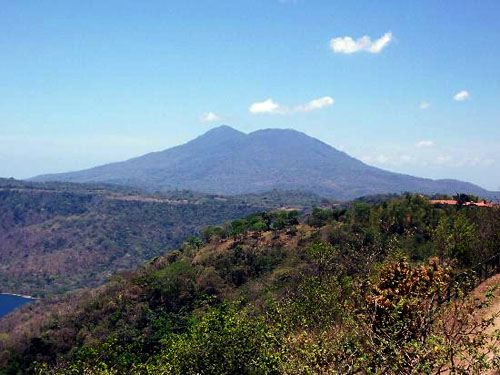
All text, maps & photos © Hilton Pond Center
Nicaragua is rich in biodiversity with tropical rain forests, mountain regions, a huge inland lake, and tall volcanic ranges (Mombacho Volcano, above). It has 76 protected regions, including 23 privately owned natural reserves; the total protected area represents 18% of the country. Private reserves are accessible to visitors and offer an introduction to sustainable development and environmentally friendly projects that help the local economy, including organic shade-grown coffee farming.
All text, maps & photos © Hilton Pond Center
Nicaragua brings a new twist to our Neotropical hummingbird expeditions in that during the nine-day trip we'll be staying at higher altitude within an ethereal, almost mystical cloud forest (above). At 4,300-foot elevation this habitat is very different from our dry forest sites in Costa Rica and Guatemala or our sea-level locale in Belize.
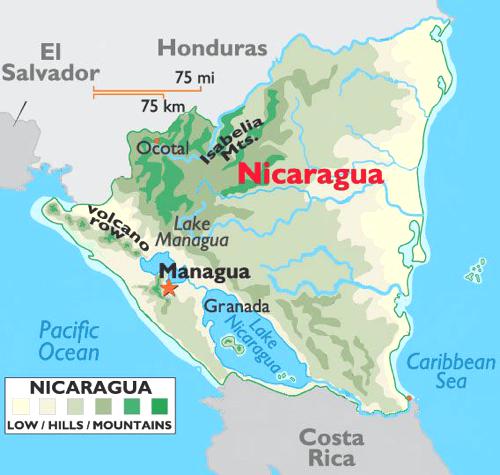
All text, maps & photos © Hilton Pond Center
Flights into the Nicaraguan capital of Managua arrive late afternoon, so we'll overnight there at a modern hotel near the airport. Next morning we'll head out in an air-conditioned bus through tropical diverse Nicaraguan landscapes--sightseeing and having lunch along the way--and arriving afternoon at El Jaguar Cloud Forest Reserve north of Jinotega. This 240-acre private mixed-use property is operated by Lili and Georges Duriaux–Chavarría and includes an established banding station and organic shade-grown coffee farm where visitors can learn about environmentally friendly farming practices and sample local brews. El Jaguar is home to a huge variety of tropical plants from epiphytic orchids to towering mist-shrouded trees--and more than 150 bird species. On the reserve in 2002 scientists "rediscovered" the Golden-cheeked Warbler--an endangered species not seen in Nicaragua since 1891.
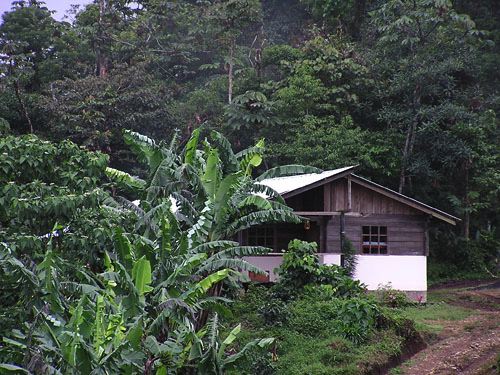
All text, maps & photos © Hilton Pond Center
Our Nicaraguan study site is more remote and a bit more strenuous than our others in Central America, but that's all part of the adventure. El Jaguar has double-occupancy cabins (above) and private hot-water baths--plus a group dining room with fresh fruit, meats, and vegetables at every meal.

All text, maps & photos © Hilton Pond Center
At El Jaguar we'll simply walk into nearby forest after breakfast and spend morning hours running mist nets to capture Ruby-throated Hummingbirds. We expect to catch lots of other migrant and resident bird species, perhaps a Crimson-collared Tanager (male above). Because other ornithologists conduct research at El Jaguar, we may catch some of their banded birds and vice versa--which will make for a nice collaborative effort. February weather in the Nicaraguan cloud forest--as might be expected--can be warm and muggy; it can also get chilly, especially at night. El Jaguar will require some exertion on hilly terrain but the site offers unusual opportunities for intimate looks at breathtaking habitats and tropical plants and animals not seen at many tourist locales.
The trip is open to ANY adult interested in studying and reporting observations of hummingbirds in Nicaragua (and--after the trip--in the rest of Central America, Mexico, Canada, and/or the U.S.). You do NOT have to be an experienced birder or scientist or have advanced training; we will teach you everything you need to know to participate in the project.
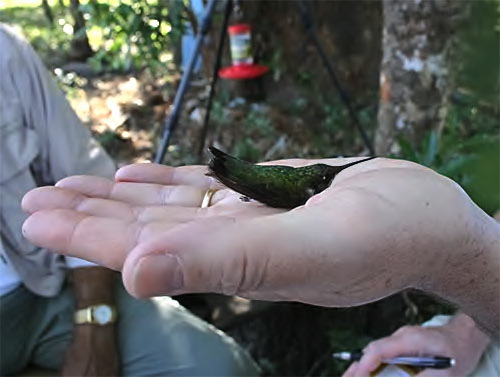
All text, maps & photos © Hilton Pond Center
Because making you a hummingbird bander is NOT the purpose of this particular trip, you will not actually be banding birds or removing them from nets. However, you WILL be involved in every other way: Handling and releasing multiple hummers (above) and other colorful tropical birds, deploying mist nets and traps, collecting and recording data, making valuable field observations, photographing flora and fauna, etc. You will NOT be disappointed!

All text, maps & photos © Hilton Pond Center
Our 2011 expedition to the Nicaraguan wintering grounds of Ruby-throated Hummingbirds is scheduled for 2-10 February. We especially encourage participation by K-12 teachers and will be happy to collaborate with them on efforts to find grants to help underwrite trip costs and/or to work with home institutions if they seek graduate credit for the experience. (NOTE: There's also an option for a U.S. or Canadian teacher to travel and participate for FREE by recruiting 14 high school or college students for a special 7-, 8-, or 9-day trip; student trips can be scheduled anytime November through late February. Please contact us for details.)
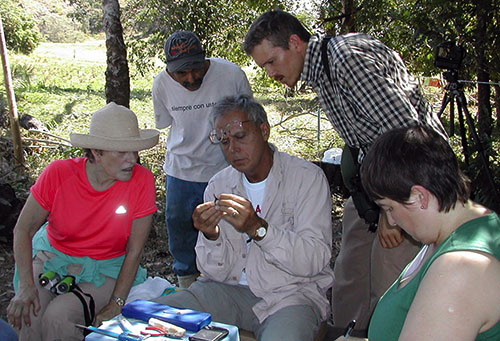
All text, maps & photos © Hilton Pond Center
In-country K-12 educators sometimes receive full scholarships from Hilton Pond Center and Holbrook Travel to join the adult excursions as active participants. If so, their involvement helps create connections with fellow educators and students from other countries in which Ruby-throated Hummingbirds also occur.
After reading the itinerary and requirements below, please contact Debbie Sturdivant at Holbrook Travel (1-866-748-6146) if you have any questions about enrolling and/or to request enrollment forms. Register early to guarantee you can participate!
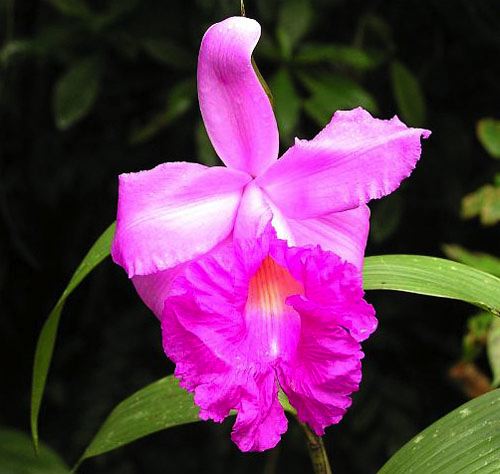
All text, maps & photos © Hilton Pond Center
NICARAGUA ITINERARY HIGHLIGHTS
- Observation, trapping/netting, and handling, banding & release of Ruby-throated Hummingbirds in the field
- In-hand examination of many migrant and resident Neotropical bird species
- Field study within a cloud forest reserve
- Up-close views of colorful tropical plants (pink orchid, above)
- Half-day visits to Selva Negra natural area and to the historic town of San Rafael del Norte
- Plenty of opportunities for independent exploration and observation and photography of fascinating tropical plants and animals
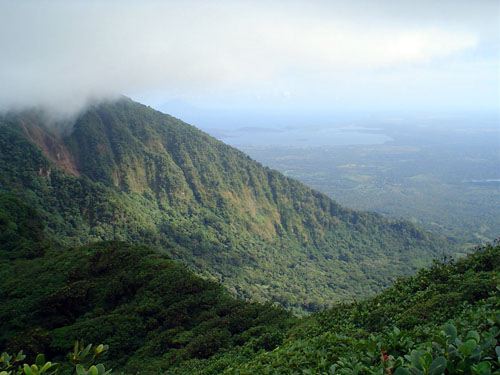
All text, maps & photos © Hilton Pond Center
NICARAGUA EDUCATIONAL CONNECTIONS
- Hummingbird Observation & Banding
- Neotropical Migrant Bird Behavior
- In-hand Views of Non-migratory Tropical Birds
- Tropical Cloud Forest Ecology
- Nocturnal Animal Behavior
- Biodiversity
- Volcanology & Landforms (Mombacho Volcano & Lake Nicaragua, above)
- Conservation
- Nature Photography
- Pedagogical Field Techniques
- Research Field Techniques
- Nicaraguan History & Culture
- Optional graduate credit is available through Weber State University (some trip costs may be deductible as educational expenses and/or be eligible for loans or scholarships from outside sources; teachers should ask principals and district offices if partial funding is available locally)
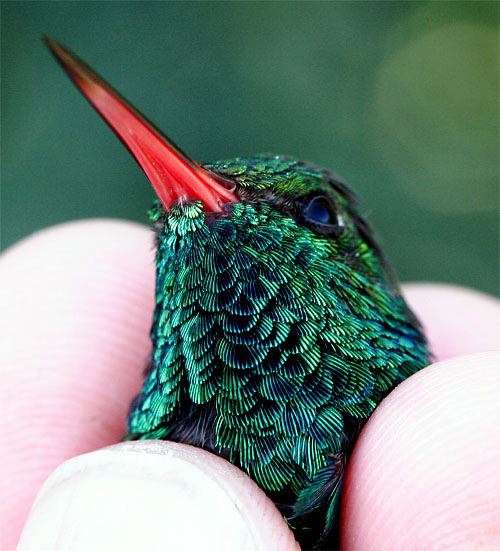
All text, maps & photos © Hilton Pond Center
NICARAGUA HUMMINGBIRD DIVERSITY
Nicaragua is host to up to 54 hummingbird species (Trochilidae)--21 of which have been reported at El Jaguar. In addition to banding our target birds--Ruby-throated Hummingbirds--we're likely to capture such species as Canivet's Emerald (male above) and Plain-capped Starthroat (below).

All text, maps & photos © Hilton Pond Center
NICARAGUA ACTIVE ADVENTURES
(all optional)
- Day hiking
- Nature exploring & photography
- After-dark nature walks
- Horseback trail ride (optional, at Selva Negra)
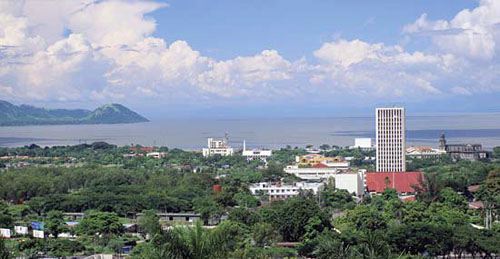
-DETAILED ITINERARY for NICARAGUA-
9-17 February 2011
(Wednesday thru Thursday of the following week)
DAY 1: February 9 (Wednesday)--Arrival & Overnight in Managua
- Late Afternoon: Arrive at Sandino International Airport in Managua (above), greeted by local personnel. Transported by air-conditioned tour bus to local hotel for supper and overnight lodging.
- Evening: Informal meeting about Operation RubyThroat: The Hummingbird Project
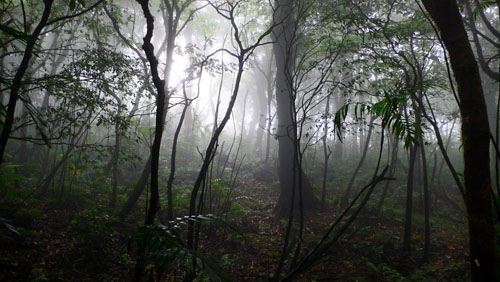
All text, maps & photos © Hilton Pond Center
DAY 2: February 10 (Thursday)--Managua & Transfer to El Jaguar Cloud Forest Reserve
- Morning: Breakfast at Managua hotel; depart via air conditioned bus for four-hour ride through scenic Nicaraguan landscapes to El Jaguar Cloud Forest Reserve (above), with sightseeing stops and lunch en route
- Late Afternoon: Arrival at El Jaguar; general orientation to area; gather to watch sunset.
- Evening: Introductions & Overview of Operation RubyThroat and methodologies to be used while monitoring, capturing & banding Ruby-throated Hummingbirds, Archilochus colubris.
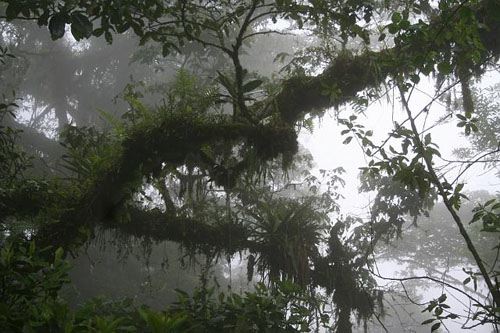
All text, maps & photos © Hilton Pond Center
DAY 3: February 11 (Friday)--El Jaguar & Day of Discovery
- Early Morning: Breakfast at the Lodge (occurs daily, unless otherwise noted). Introduction to cloud forest (above). Day One of field work: Make observations; scout for concentrations of wintering Ruby-throated Hummingbirds; set traps and/or nets within various local habitats; record data; band and release hummingbirds (and other Neotropical migrants) as captured. (NOTE: Most days we are at the study site by 6:30 a.m. and depart by 11:30 a.m.)
- Lunch: Back at the Lodge (occurs daily, unless otherwise noted).
- Afternoon: Explore local habitats on your own; great chances for observations and photos of tropical flora and fauna.
- Late Afternoon: Gather to watch sunset.
- Supper: At the Lodge (occurs daily, unless otherwise noted).
- Evening: Continuation of Operation RubyThroat discussions. Informal presentations by trip participants.

All text, maps & photos © Hilton Pond Center
DAY 4: February 12 (Saturday)--El Jaguar
- Early Morning: Day Two of hummingbird observations and banding at study site(s).
- Afternoon: Explore local habitats on your own; great chances for observations and photos of tropical flora and fauna, including Hoffman's Two-toed Sloth (above)
- Late Afternoon: Gather to watch sunset.
- Evening: Continuation of Operation RubyThroat discussions. Informal presentations and introduction to Nicaraguan culture. (On at least one evening we will have opportunity for an optional night hike to observe nocturnal inhabitants of the Mombacho reserve.)

All text, maps & photos © Hilton Pond Center
DAY 5: February 13 (Sunday)--El Jaguar & Selva Negra
- Early Morning: Day Three of hummingbird observations and banding at study site(s).
- Afternoon: Field trip via air-conditioned bus to Selva Negra Mountain Resort to seek (and listen to) Three-wattled Bellbirds (above). Optional horseback ride through the forest.
- Evening: Continuation of Operation RubyThroat discussions. Informal presentations.
Morning & Afternoon: Sleep in a little.
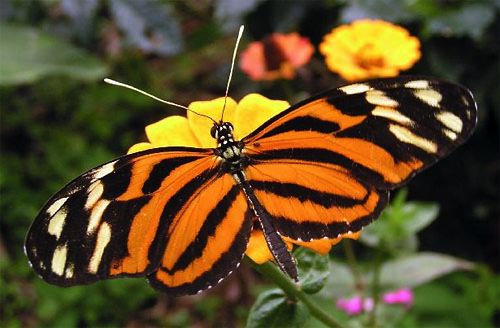
All text, maps & photos © Hilton Pond Center
DAY 6: February 14 (Monday)--El Jaguar
- Early Morning: Introduction to El Jaguar cloud forest. Day Four of field work: Make observations; scout for concentrations of wintering Ruby-throated Hummingbirds; set traps and/or nets within various local habitats; record data; band and release hummingbirds (and other Neotropical migrants) as captured.
- Afternoon: Explore grounds on your own for observations of such colorful creatures as the butterfly above.
- Late Afternoon: Gather to watch sunset.
- Evening: Continuation of Operation RubyThroat discussions. Informal presentations and introduction to Nicaraguan culture.
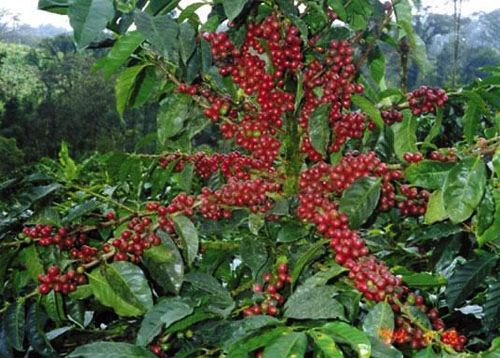
All text, maps & photos © Hilton Pond Center
DAY 7: February 15 (Tuesday)--El Jaguar
- Early Morning: Day Five of hummingbird observations and banding at study site(s).
- Early Afternoon: Introduction to organic shade-grown coffee production (berries above).
- Late Afternoon: Gather to watch sunset.
- Evening: Continuation of Operation RubyThroat discussions. Informal presentations and introduction to Nicaraguan culture. Optional Night Hike.

All text, maps & photos © Hilton Pond Center
DAY 8: February 16 (Wednesday)--El Jaguar & San Rafael del Norte
- Early Morning: Day Six of hummingbird observations and banding at study site(s).
- Early Afternoon: Field trip via air conditioned bus to the picturesque city of San Rafael del Norte (chapel above), one of the highest cities in Nicaragua at 3,500 feet. Established in 1851, the town has many examples of Spanish-influenced architecture. Murals inside the main cathedral portray various biblical stories in which the devil is a prominent figure.
- Late Afternoon: Begin packing for next day's departure. Gather to watch sunset.
- Evening: Final analysis of hummingbird data & "Farewell Fiesta."

All text, maps & photos © Hilton Pond Center
DAY 9: February 17 (Thursday)--El Jaguar & Departure
- Early Morning: Depart for Managua airport via air conditioned bus for flight home (hugs optional but likely among new friends).
- Evening: Dream in your own hometown bed about hummingbirds and the cloud forests of Nicaragua!

All text, maps & photos © Hilton Pond Center
VERY IMPORTANT NOTE: The main purpose of any Operation RubyThroat expedition to the Neotropics is to learn about Ruby-throated Hummingbird "winter" behavior; thus, your active participation in making daily observations and collecting data is critical to the trip's success. A working pair of good binoculars is the only required equipment. We expect you to take initiative, carry your share of the load, and listen to and follow instructions carefully. We also expect you to look out for each other's needs and to be considerate of the hummingbirds we work with. We will have many wonderful and enjoyable experiences together, but this is NOT a pleasure trip--even though you'll have plenty of free time and are certain to have fun.

All text, maps & photos © Hilton Pond Center
If you are NOT willing to work hard in the field all week and follow the expedition's research and education goals, this is not a trip for you; we NEED your help our success will depend on you. Most days involve early through late-morning field activity under warm to hot conditions and after-supper meetings, with afternoons open for you to do as you wish. Scheduled activities are subject to change due to weather or to take advantage of unexpected learning and research opportunities, but we'll do everything we can to make sure we offer all non-research activities described above.
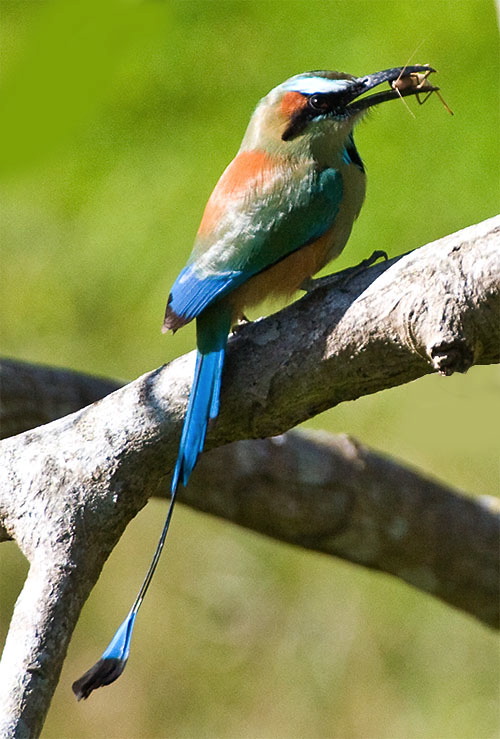
All text, maps & photos © Hilton Pond Center
The Turquoise-browed Motmot is Nicaragua's national bird and a species we're sure to see. An eater of large insects, it often wags its pendular tail when perched.
NICARAGUA EXPEDITION LEADERS
BILL HILTON JR. (below left), internationally known educator-naturalist, was twice named South Carolina Science Teacher of the Year and was honored as the state's Outstanding Biology Teacher. In 1998, The Charlotte Observer named him a Carolinas "Guardian of the Environment" for a lifetime of trend-setting work in conservation and environmental education. 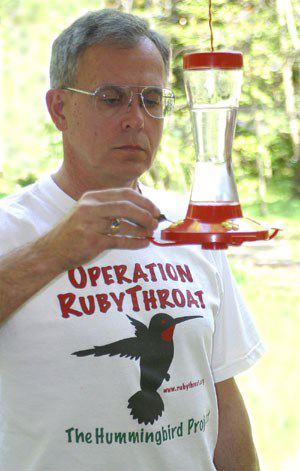 He has led ten highly successful hummingbird expeditions to Costa Rica and one to Belize. The December 2008 issue of Discover magazine cited Hilton as one of the top ten amateur scientists in America and one of the nation's "50 Best Brains in Science." He has led ten highly successful hummingbird expeditions to Costa Rica and one to Belize. The December 2008 issue of Discover magazine cited Hilton as one of the top ten amateur scientists in America and one of the nation's "50 Best Brains in Science."
Hilton is executive director of Hilton Pond Center for Piedmont Natural History. As principal investigator for "Operation RubyThroat: The Hummingbird Project," he received a 42-month grant from the National Science Foundation to integrate Operation RubyThroat with The GLOBE Program. Since 1982, Hilton has banded more than 54,000 birds at Hilton Pond, including 4,000-plus Ruby-throated Hummingbirds.
Hilton taught in Rock Hill and Fort Mill SC high schools, and at the University of Minnesota, St. Olaf College, and Winthrop University. He helped start the residential South Carolina Governor’s School for Science and Mathematics in Hartsville, which he served as biology instructor and director of student research.
Hilton is a nationally sought-after speaker on diverse natural history topics. He has a Bachelor of Arts in Philosophy from Newberry College, which he served as president of the Alumni Association. In this role, he organized a major international symposium on John Bachman, founder of Newberry College and a contemporary of John James Audubon. Hilton earned a Master of Arts in Biology Teaching from Winthrop University, and a Master of Science in Ecology & Behavioral Biology from the University of Minnesota, where he conducted a four-year field study of the behavioral ecology of Blue Jays, Cyanocitta cristata. For a complete resume, see his Biographical Sketch.
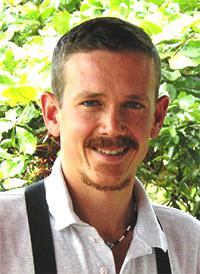 Hilton and the group will be assisted by ERNESTO M. CARMAN JR. of Talamanca Hawkwatch and Programa Conservacion de Aves. Ernesto (at right), a native-born Costa Rican (tico), speaks fluent English and Spanish, and is one of only a few naturalists with extensive experience observing Ruby-throated Hummingbirds within Costa Rica. Ernesto's sharp eyes and ears, comprehensive knowledge, and terrific personality greatly enrich our time in the field. After six years of involvement with the project he is a true collaborator and not just an in-country guide. Ernesto's family runs Finca Cristina, an environmentally friendly coffee farm that uses shade-grown organic techniques and recycles processing materials. Hilton and the group will be assisted by ERNESTO M. CARMAN JR. of Talamanca Hawkwatch and Programa Conservacion de Aves. Ernesto (at right), a native-born Costa Rican (tico), speaks fluent English and Spanish, and is one of only a few naturalists with extensive experience observing Ruby-throated Hummingbirds within Costa Rica. Ernesto's sharp eyes and ears, comprehensive knowledge, and terrific personality greatly enrich our time in the field. After six years of involvement with the project he is a true collaborator and not just an in-country guide. Ernesto's family runs Finca Cristina, an environmentally friendly coffee farm that uses shade-grown organic techniques and recycles processing materials.
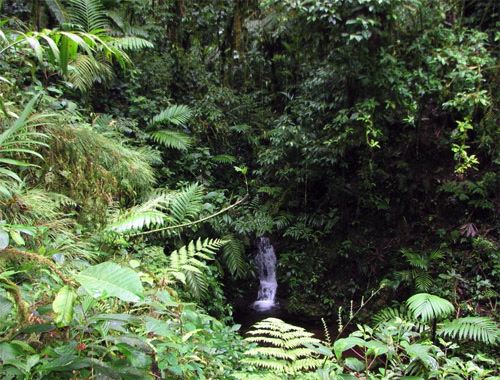
All text & photos © Hilton Pond Center

2011 NICARAGUA LAND PROGRAM COST: $1,799
(Please e-mail Wendy Frazier, Holbrook Travel's air specialist, for international airfare rates from your city. Holbrook often has access to "add-on" airfare at rates cheaper than those available to the general public. Holbrook can also arrange trip extensions before or after the Operation RubyThroat expedition.)
NOTE: Alumni of any Holbrook Professional Development Expedition--including past Operation RubyThroat trips to Costa Rica & Belize--are eligible for a $150 discount for any and all of the 2011 Operation RubyThroat excursions.
--Rates are based on: Double occupancy with a full roster of 12 participants and subject to increase with fewer participants. (Any participant may select a single room for about $400 extra, but we recommend doubling as part of the community experience.)
--Participants must be: At least 21 years of age by the time the trip begins, and willing and able to participate in field work and all education and research activities. (Special consideration may be given on a case-by-case basis for college students and for advanced, mature senior high school or college students accompanied by a parent. We also can offer a full week for a class of 12-14 responsible high school students between November and late February; the sponsoring teacher earns a FREE trip. Please contact us for details.)
--Each participant must: Bring and know how to use a decent pair of binoculars with which to make field observations. Sharing binoculars doesn't work.
--Participants must be: In good physical & mental health and able to walk at slow to moderate pace for short distances (usually less than a half mile) over diverse terrain--sometimes hilly--at the study site, and be able to carry light objects in the field (mist net poles, banding tools, day pack, etc.). 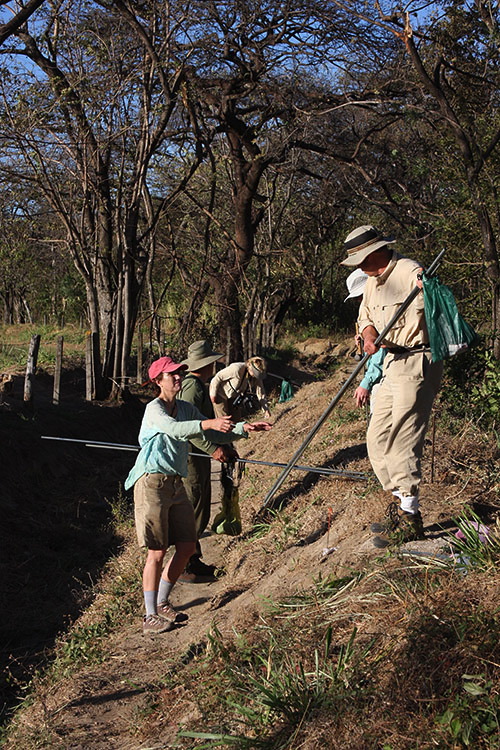 Participants may need to stand for extended periods (up to 60 minutes) to monitor nets under sunny conditions, with opportunities for water breaks in the shade. On past expeditions, participants as old as 80 have had no problems with the minimal physical demands of the project. Participants may need to stand for extended periods (up to 60 minutes) to monitor nets under sunny conditions, with opportunities for water breaks in the shade. On past expeditions, participants as old as 80 have had no problems with the minimal physical demands of the project.
--Program cost includes: All in-country transportation, accommodations, meals, expert local guide (bilingual), learning activities and field trips, and Operation RubyThroat instructional materials, as stated above.
--Program cost does not include: International airfare (about $500-$750, depending on departure point; use frequent flyer miles if you can); meals, if any, away from the hotel; any additional optional activities not described above (e.g. horseback ride); non-mealtime beverages or snacks; gratuities for guide, driver, and local personnel; estimated $30 departure tax; or optional graduate credit costs. (Please note that because of difficulty with international connections and depending on your point of origin, it may be necessary for you to spend an extra night traveling to and/or from Nicaragua.)
--Payment policy: To confirm your space, send $200 deposit per person to Holbrook Travel along with your enrollment form(s); deposit for all trips is due on or before 12 September 2010. We suggest early deposit to guarantee your space. Each deposit is refundable minus a $100 processing fee if cancellation is received by 5 November 2010; there will be no refunds for cancellations after that date. Final payment of $1,599 is due on 6 November 2010. (We strongly advise inexpensive third-party trip insurance to cover unexpected circumstances that could cause you to cancel after your final payment is made; such insurance can also cover flight delays and related land transportation, in-country medical care, etc.)
--Pre-trip activities: We will communicate with you frequently via e-mail in the weeks leading up to your trip. You'll also receive suggested readings and resources that will enhance your trip experience. We anticipate you will study and learn all important information related to the trip's research goals.
--Optional graduate credit: Contact Holbrook Travel's Debbie Sturdivant for information about how to apply and pay for graduate credit through Weber State University. You may also elect to work with your local college to earn credit there. K-12 educators may file for continuing education credits.
--Tax deductions: Because Operation RubyThroat expeditions are service projects in support of a non-profit, an estimated $400 of your fees should be tax-deductible on your 2010 tax forms.  If you are participating as part of a college degree program or are a classroom teacher, additional tax deductions may be taken--in fact, the FULL COST of the trip may be deductible. (In some cases, this means after taxes the trip actually will end up costing you nothing!) If you are participating as part of a college degree program or are a classroom teacher, additional tax deductions may be taken--in fact, the FULL COST of the trip may be deductible. (In some cases, this means after taxes the trip actually will end up costing you nothing!)
Hilton Pond Center for Piedmont Natural History and Operation RubyThroat: The Hummingbird Project expeditions are non-profit trips offered as outreach activities through which we learn more about winter behavior of Ruby-throated Hummingbirds. If you're interested in making a separate contribution to the Center and/or Operation RubyThroat, please see Supporting the Work of Hilton Pond Center.
After reading the information above, contact Debbie Sturdivant at Holbrook Travel by E-mail or phone (1-866-748-6146) if you have any questions about enrolling and/or to request enrollment forms. You can also ENROLL ON-LINE. See you in Nicaragua!

Adult female Ruby-throated Hummingbird (above),
captured for banding
All text, maps & photos © Hilton Pond Center
El Jaguar photos courtesy El Jaguar Cloud Forest Reserve
For complete reports on all our successful Neotropical hummingbird banding expeditions, please visit
"This Week at Hilton Pond" at the following links:
|
|
|
|
|
|
|
|
|
|
|
|
|
|
|
|


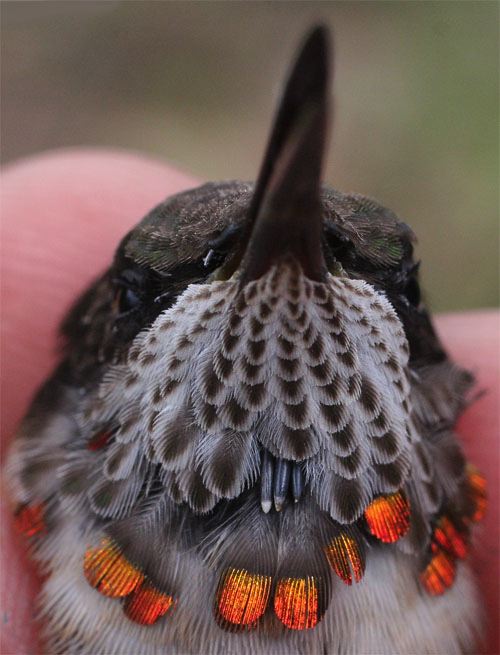
 During our 2001 expedition to western Nicaragua, Center director Bill Hilton Jr. will teach participants how hummingbirds are observed, captured, banded, and released. As "citizen scientists," participants will play integral roles in conducting field work, will visit diverse habitats, and will learn about fascinating aspects of Nicaraguan natural history and culture--from volcanoes to cloud forest ecosystems, from orchids to tropical butterflies.
During our 2001 expedition to western Nicaragua, Center director Bill Hilton Jr. will teach participants how hummingbirds are observed, captured, banded, and released. As "citizen scientists," participants will play integral roles in conducting field work, will visit diverse habitats, and will learn about fascinating aspects of Nicaraguan natural history and culture--from volcanoes to cloud forest ecosystems, from orchids to tropical butterflies.
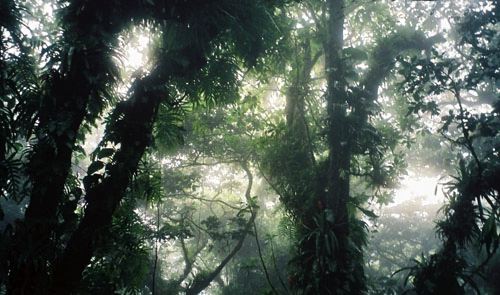






















 He has led ten highly successful hummingbird expeditions to Costa Rica and one to Belize. The December 2008 issue of Discover magazine cited Hilton as one of the top ten amateur scientists in America and one of the nation's "50 Best Brains in Science."
He has led ten highly successful hummingbird expeditions to Costa Rica and one to Belize. The December 2008 issue of Discover magazine cited Hilton as one of the top ten amateur scientists in America and one of the nation's "50 Best Brains in Science." Hilton and the group will be assisted by ERNESTO M. CARMAN JR. of Talamanca Hawkwatch and Programa Conservacion de Aves. Ernesto (at right), a native-born Costa Rican (tico), speaks fluent English and Spanish, and is one of only a few naturalists with extensive experience observing Ruby-throated Hummingbirds within Costa Rica. Ernesto's sharp eyes and ears, comprehensive knowledge, and terrific personality greatly enrich our time in the field. After six years of involvement with the project he is a true collaborator and not just an in-country guide. Ernesto's family runs
Hilton and the group will be assisted by ERNESTO M. CARMAN JR. of Talamanca Hawkwatch and Programa Conservacion de Aves. Ernesto (at right), a native-born Costa Rican (tico), speaks fluent English and Spanish, and is one of only a few naturalists with extensive experience observing Ruby-throated Hummingbirds within Costa Rica. Ernesto's sharp eyes and ears, comprehensive knowledge, and terrific personality greatly enrich our time in the field. After six years of involvement with the project he is a true collaborator and not just an in-country guide. Ernesto's family runs 
 Participants may need to stand for extended periods (up to 60 minutes) to monitor nets under sunny conditions, with opportunities for water breaks in the shade. On past expeditions, participants as old as 80 have had no problems with the minimal physical demands of the project.
Participants may need to stand for extended periods (up to 60 minutes) to monitor nets under sunny conditions, with opportunities for water breaks in the shade. On past expeditions, participants as old as 80 have had no problems with the minimal physical demands of the project. If you are participating as part of a college degree program or are a classroom teacher, additional tax deductions may be taken--in fact, the FULL COST of the trip may be deductible. (In some cases, this means after taxes the trip actually will end up costing you nothing!)
If you are participating as part of a college degree program or are a classroom teacher, additional tax deductions may be taken--in fact, the FULL COST of the trip may be deductible. (In some cases, this means after taxes the trip actually will end up costing you nothing!)


 You can also
You can also